Hair loss in goats is one of the more common issues that owners and goat breeders will face. There are many reasons why goats lose their hair.
Goats can definitely shed their hair in a seasonal manner. This is called seasonal shedding.
During extreme cold seasons or harsh winters, they grow thick hair to insulate their body and retain warmth. When the warm season arrives, they shed some of their hair to prevent heatstroke and help to regulate their body temperature.
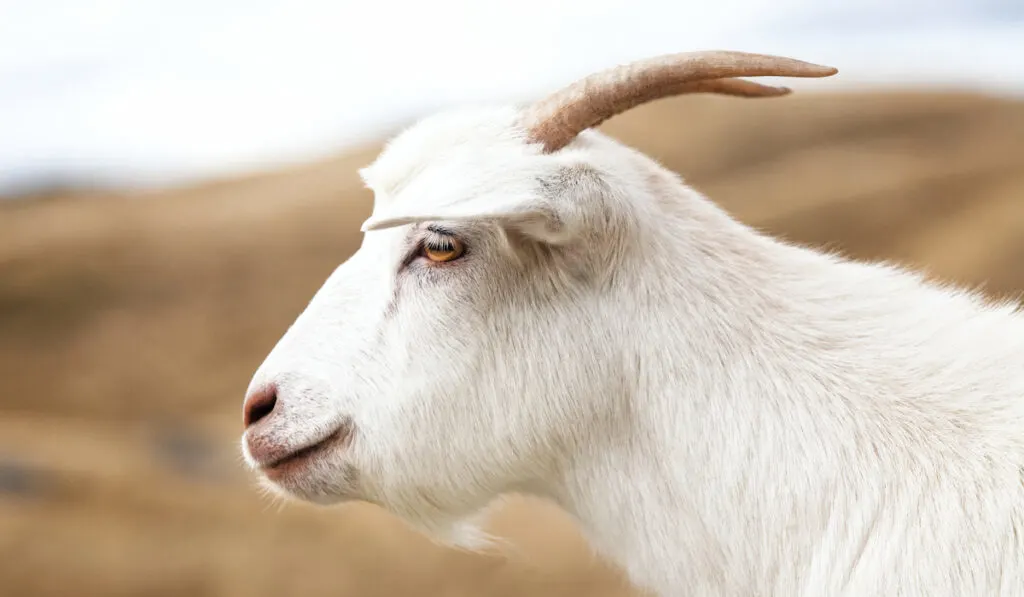
There is also another cause of hair loss on certain parts of goats’ bodies. For instance, if you see any loss of hair around their face, eyes, and ears, they might be suffering from scabies. Without any immediate treatment, the skin around the infected areas would also turn scaly.
Table of Contents
Six Reasons Why Goats Might Be Losing Hair
Like other animals, goats are prone to experience hair loss due to factors other than seasonal shedding. These factors may be internal and external.
Normal shedding of hair is not a cause for concern. But an excessive loss of hair is certainly an indication of something serious.
Here are six reasons why goats might be losing hair:
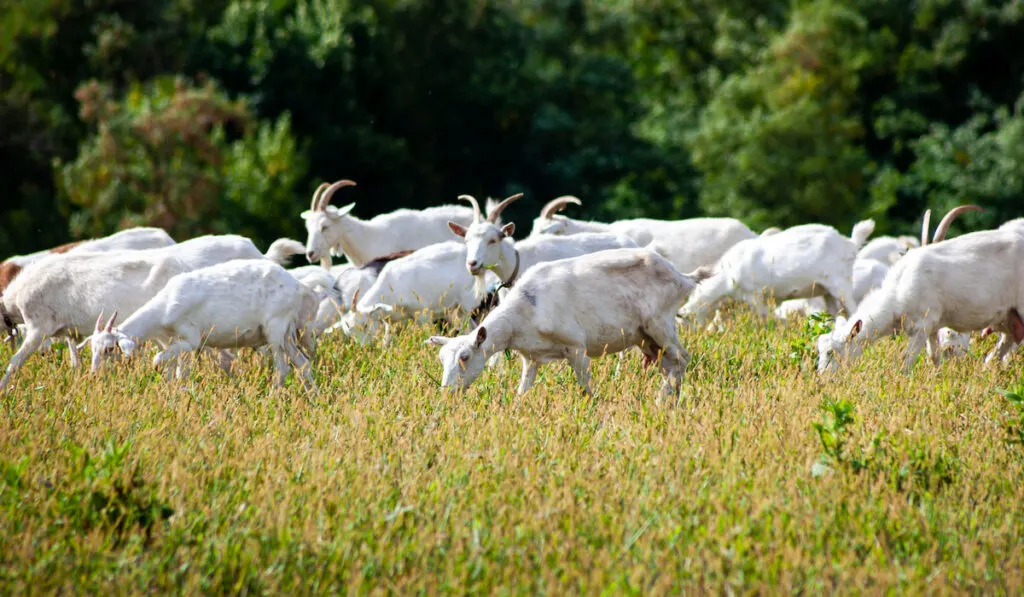
1. Parasitic Skin Problems
One of the most common parasitic skin problems found in goats is mange. Mange is severe dermatitis caused by an infestation of lice and mites. It is highly contagious and can infect the entire herd quicker than any other disease.
The mites found on goats are from four different species; Sarcoptic (S. scabiei var), Demodectic (D. caprae), Chorioptic (Chorioptes bovis), and Psoroptic (P. cuniculi).
Different types of mange can produce different symptoms. However, typical clinical signs of these parasitic skin problems are coat damage, restlessness, excessive scratching, rubbing, fatigue, skin damage, irritations, and poor growth rates in kids.
Another parasite that could damage a goat’s health is lice. Lice can be found on a goat’s skin and measures around 0.02 to 0.3 inches.
There are two types of lice; sucking lice and chewing lice. The most common sucking and chewing lice found on goats are Red Louse (Bovicola caprae) and Goat Sucking Lice (Linognathus stenopsis).
Signs of lice on goats are irritations, restlessness, and intense scratching that could lead to self-inflicted wounds.
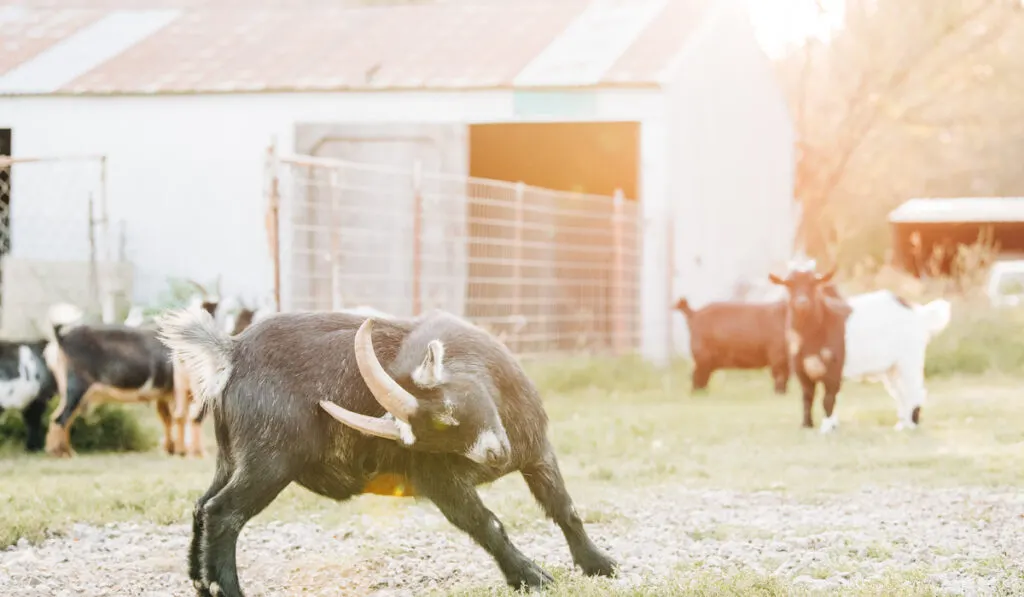
2. Bacterial Skin Infections
Bacterial skin infections in goats are mainly caused by internal body systems or external factors like the environment they live in. Harmful bacteria will infect the skin of goats when there is an open wound or the right environment that promotes the growth of these microorganisms.
Some of the common bacterial skin infections found on goats are staphylococcal dermatitis and dermatophilosis.
Staphylococcal dermatitis is an infection caused by Staphylococcus aureus. This bacteria can cause skin lesions around the eyes, ears, and head.
For infected goats that just give birth, blister-like pustules and vesicles can be found on their teats and udder. If the udder is infected, the goat should be milked last to prevent the spread of this bacteria. All infected goats should also be quarantined and isolated from the rest of the herd.
Dermatophilosis, also known as rain scald, is caused by Dermatophilus congolensis. This infection can cause scab formation, crusting, and hair loss around the muzzle, ears, face, and tail.
Some of the small crusts on the affected areas can be easily removed to expose the infected lesions for further treatment. This infection could also cause lesions on the limbs and lower legs of goats. It is called the ‘strawberry footrot’.
Like any other infection, infected goats should be isolated from the rest of the herd. Providing proper shelter during the rainy season is also important to prevent moisture that could slow down the healing process.
After antibiotic or topical antibiotic ointment is applied to the goats, maintaining a balanced diet is important to prevent the infection from relapsing.
3. Fungal Infection
Fungal infections on goats’ skin are mainly caused by ringworm. Although the common term used is ringworm, this infection, also called dermatophytosis, is caused by a specific type of skin-loving fungi called dermatophytes.
Some of the species of dermatophytes found on goats are Tricophyton verrucosum, Microsporum canis, T. mentagrophytes, and T. gypseum.
Typical clinical signs of a fungal infection are loss of hair with crusty and flaky, irritated skin. Common areas affected by the fungi are the ears, face, and neck.
Intense itching also occurs, which leads to restlessness and injury from excessive scratching.
When dealing with dermatophytosis, protective measures must be taken because this disease is contagious to humans. This infection is usually diagnosed by culturing the skin and hair of the affected goats.
4. Hormonal Changes
During pregnancy, goats shed their hair due to hormonal imbalances and physiological changes in their body. Although this event might not occur to every goat, hormonal imbalances could cause hair loss.
Also, the lactation period in goats is one of the contributing factors of nutrient deficiency, in which calcium levels and other minerals will become low. This will lead to poor hair retention and growth.
Hormonal imbalances can also come from stress due to isolation from the herd, nursing, kidding, and psychological issues. In this case, the affected areas where the loss of hair occurs would be on the back and shoulders.
A stress hormone that comes from abnormal thyroid and adrenal function could also contribute to loss of hair.
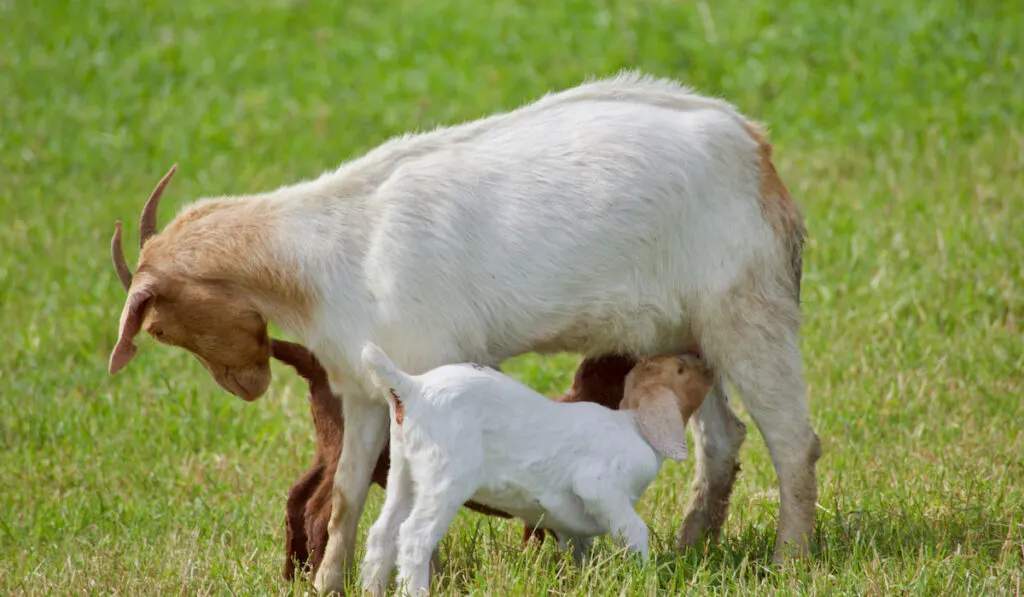
5. Traumatic Hair Loss
Another possible cause of hair loss can also come from trauma to the skin. When grazing, goats tend to experience minor injuries from scratches. Some wounds could also be caused by fights with other goats.
In some cases, self-inflicted trauma can lead to hair loss. When they rub their bodies frequently on fences or blunt objects around them, irritation and skin injuries could happen.
6. Malnutrition
Lack of essential nutrients can also lead to hair loss in goats. The period of time when goats are lacking in certain vitamins or minerals is during the winter when they mostly eat hay.
But the most common mineral deficiency that contributes to poor hair growth and shedding in goats is the lack of zinc.
Signs of zinc deficiency in goats are excessive salivation, swollen and stiff limbs, hoof deformation, flaky skin, and low appetite. Hair loss could also be found on goats that lack zinc in their diet.
However, not all zinc deficiencies are caused by a poor diet.
Some breeders and goat owners also give too many calcium supplements to pregnant goats. Excessive intake of calcium can lead to poor absorption of zinc.
To solve this issue, the amount of calcium should be reduced and rebalanced in proportion to the amount of zinc in the goats’ diet.
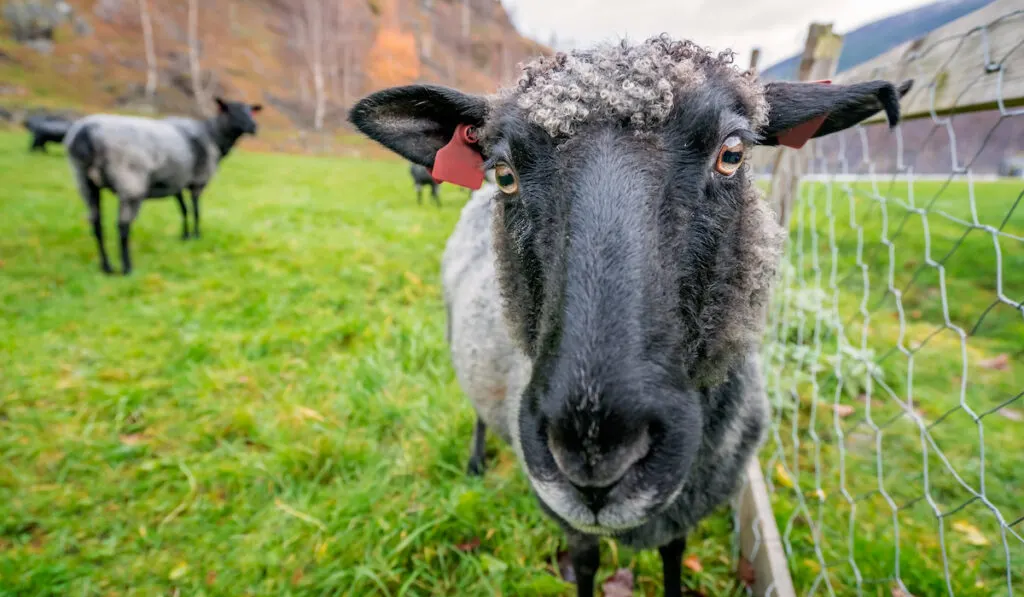
Final Thoughts
There are many causes of hair loss in goats, both internal and external. If you are unsure, the best course of action to diagnose this issue would be a quick visit to the nearest vet. The last thing you want are complications like parasite and bacterial infections that could lead to expensive medical treatments.
Resources
- https://petblog.org/goat-shedding/
- https://kinne.net/hairloss.htm
- https://animals.mom.com/how-to-treat-mange-on-goats-4669192.html
- https://backyardgoats.iamcountryside.com/health/causes-of-hair-loss-in-goats/
- https://www.angoras.co.za/article/hair-loss-in-angora-goats
- https://www.infovets.com/books/smrm/F/F770.htm
- https://www.farmhealthonline.com/disease-management/goat-diseases/mange-in-goats/
- https://neweralive.na/posts/feature-why-your-goat-loses-hair
- https://www.dummies.com/home-garden/hobby-farming/raising-goats/how-to-control-external-parasites-on-your-goats/
